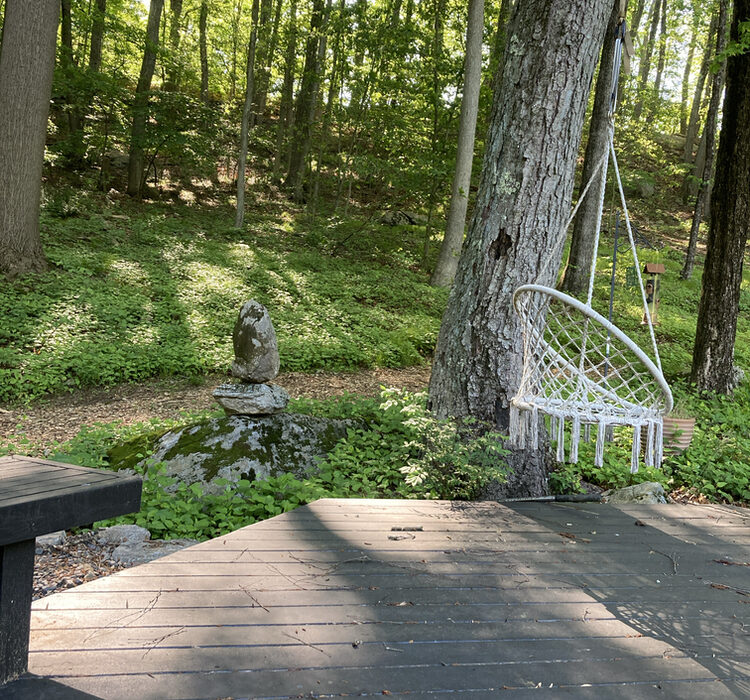(Part 9 of 13 in series, Changes and Results)
One of my favorite ideas from Charles Duhigg’s book, The Power of Habit, is the idea of a keystone habit. Keystone habits create a chain reaction; Changing and rearranging your other habits as you integrate the habit into your life. According to Duhigg, “keystone habits influence how we work, eat, play, live, spend, and communicate”, and they “start a process that, over time, transforms everything.”
After self-awareness and self-assessment, my 20 minutes of stretching and recovery work every morning is by far the single most important thing I’ve changed in my journey. (“Every morning” is the goal, not always the reality.) Initially, it was the one critical first little piece of success from which I launched a pile of awesome changes. It continues to be my reliable fallback position when things go off the rails.
Every time I get stuck, fail at sticking to a good habit, or make a mistake with diet, I repeat to myself: Start again tomorrow. Start again tomorrow with one small bit of success first thing in the morning, (and a cup of coffee.)
How my “20 minutes” works:
Declare 20 minutes of “me-time” first thing in the morning. Literally explain to others that you are creating space for yourself to start your day. It’s not leave-me-alone time. If there are others in your household, they are welcome to visit you and interact. You may find they occasionally join you.
Go straight there, as soon as you can. Ok, yes, make a bathroom stop and obtain your beverage of choice on your way to your morning session. But you do not need to arrive at your space awake and ready to exercise. You only need to get there. The stretching and moving will gradually wake you up. It will also wake up your mind; You’re going to have twenty minutes every morning to peacefully review your yesterday, plan your today, or even practice some mindfulness meditation. But only if you want! Your initial goal is to simply get to your space ASAP each morning.
Create (or designate) a space. This is really critical. It cannot be a place that you have to setup; It has to be a place that always exists, that you can simply stumble into first thing in the morning. Find a few square feet and make it your own. A light, a little clock, maybe some music setup ready to go, maybe a yoga mat. Having a physical space (as simple or as complex as you choose to make it) will help your mind shift automatically. “I do this sort of stuff in this space,” becomes automatic.
Music? For a long time, I was really into electronica-esque music for this. (Sometimes I still use the music.) I fanatically groomed a Pandora station with electronic music that has absolutely no vocals—but obviously use whatever works for your, including no music if you prefer. When I use music, I want it to help me zone in on what I’m doing and forget the world.
Props, mats, weights, etc. Start simple. As you go along, you’ll discover things—an article on the Internet, a yoga class, a friend’s ideas—and you’ll take in new moves, stretches and exercises as your own. I started without yoga blocks, then one day found a new stretch I wanted to be able to use when I felt I needed it, and bought two simple yoga blocks for the purpose. This way everything you have in your space, has a purpose rather than being something that nags you, “oh, I should be using that.”
Simply stretching and moving is your first activity. What does your body want to do first? Just learning to be able to answer that question honestly each morning is a great lesson. Then what does it need next? Move when you feel like it. Engage muscles when you feel like it. Engage your brain when you feel like it. Twenty minutes goes by in a blink.
Other tips, tricks and resources
Take some yoga classes. Find a Yin yoga class and spend a few months learning.
No. Right. Now. Oliver Emberton has a great article, How to Debug Your Brain. It’s funny and really exactly what’s wrong with our brains. Emberton’s idea of hijacking a “transition” led me to aim for “first thing in the morning.” I hijack the, “I just got out of bed” transition as many mornings as I can. My rationale is: I was literally just ignoring everything when I was unconscious, so I can continue ignoring everything for a little longer while I put me first.
Focus on what you can control. Iterate. Steve Kamb wrote an article talking about each Avenger’s super power, and Tony Stark’s power specifically, What’s Your Avengers Superpower. Stark is not actually a superhero. Stark simply knows the rule: you can’t edit a blank page, and you can’t improve a machine that hasn’t been built yet. Iterate.
When Life Sucks
Exercise Obstacle
How to Create Habits That Stick
How Lego and Minecraft Will Help You Get in Shape
ɕ
